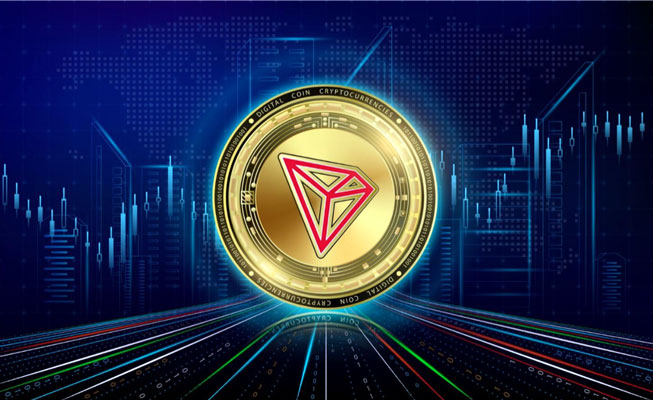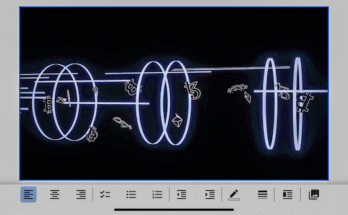Crypto projects want to improve their operations periodically so that they can still represent viable solutions to investors worldwide. The crypto ecosystem has become huge at the moment, as it is home to numerous digital coins that are all trying to overcome the shortcomings of the previous ones to increase their market capitalization. For instance, Tron (TRX) wanted to offer the best infrastructure to people and even create a decentralized internet that would make things a lot more democratic.
The Tron project was developed by Justin Sun, which is a popular name in the FinTech sector. What makes Tron stand out from the rest is that it uses unique features, like bandwidth points, which users can receive if they purchase or stake TRX. For the year ahead, Tron has already planned its roadmap, which can make the Tron price soar.
Keep reading to explore how Tron plans to improve its features in 2025.
Stability
Stability is part of the Tron roadmap, as this year, Tron wants to continue optimizing the stability of its blockchain. To this day, the Tron blockchain has already undergone some improvements to add new solutions to the stability of the platform, but improvements will also be present in 2025. So far, Tron has managed to improve its stability with the help of an accelerated mode startup, upgraded logic, and peer-to-peer (P2P) message snappy support.
In 2025, Tron intends to improve its stability and the P2P system. Even though the current network architecture has proven to be a viable solution for seven years, some issues exist that could limit Tron’s evolution. As Tron’s user base increases, it needs to offer better performance to its users. One of the current issues of the P2P network is that it can experience malicious connection occupation that can cause isolated nodes.
Because Tron has plans to increase in the future, it might also host more users. Still, if it doesn’t fix some of its challenges, it can meet risks on its path to becoming better. So, Tron needs to enhance its P2P network to mitigate future risks and address the current challenges.
Scalability and performance
In 2025, Tron also wishes to improve its protocol, and in this way, the platform can expand much more. The focus this year is on multi-platform support, fast consensus, API performance optimization, and even parallel transactions. Here are the advancements explained in detail:
Support ARM architecture
The ARM architecture has improved a lot in recent years, having the great advantage that it offers low cost, diminished electricity consumption, and high performance. ARM has started to be used more in cloud computing, data centers, and other edge computing scenarios. So, in 2025, Tron will focus more on expanding the hardware compatibility to support the ATM architecture. With the help of this architecture, users can reduce their operational costs and benefit from more flexible usage alternatives.
Parallel Execution
At this moment, Tron is focusing on processing all the transactions sequentially, which can limit the utilization of hardware in block generation or validation. However, Tron could support parallel transaction execution, which can improve the network throughput and possibly lead to more hardware advances in the future.
API performance
Tron also wants to improve performance optimization to enhance response speeds, stability, and throughput. This can greatly help dApp creators by offering a smoother experience.
Fast finality
Now, Tron uses a delegated Proof-of-Stake (DPoS) as its consensus mechanism, where the block confirmation is around one minute. This time is pretty fast, but if it wants to expand further and have more use cases, it needs to search for new ways to be faster. To achieve this, Tron can consider a fast finality mechanism that uses a dual consensus model. So besides its current DPoS, Tron could also consider a Practical Byzantine Fault Tolerance (pBFT). Thanks to this combination, the block finalization can be reduced from one minute to six seconds, which can help Tron have better expansions in the future.
Economic model
As Tron plans to change some things in its transactions, it needs to find a way to keep fees reasonable. At the moment, Tron has two main ways for transaction fees: bandwidth and energy for transaction fees for smart contracts and only bandwidth for non-smart contract transactions. With transaction fee optimization, Tron can foster sustainable growth for this blockchain in the future.
Others
State Expiry
Tron nodes need to run on regular hardware, which is particularly important for decentralization. Users can verify their information using cryptographic checks, so they don’t need to rely on third parties. Tron can’t offer this capability only to users with expensive hardware, as this can change the notion of decentralization.
However, the Tron chain data is growing, and this platform needs to look for ways to reduce storage data. This is why Tron plans to introduce a state expiration alternative to manage growing data usage. In this way, the paid data could remain while the expired one could be moved to decentralized storage and cold storage. This can ensure high performance without sacrificing data integrity.
Account Abstraction
On the Tron network, users interact with dApps through EOA accounts. However, this can restrict dApp integration and user flexibility. Thanks to account abstraction, users can enjoy a better experience and have even more control over the functionality and security of their accounts.
The bottom line
Tron has shown great potential to increase and become an even more suitable solution in the future. Because of this, it constantly searches for more ways to remain relevant and improve its users’ experience. This can also drive more demand for the platform’s native cryptocurrency, the TRX coin. In this way, this cryptocurrency can increase its market capitalization while the Tron blockchain could attract more users.








